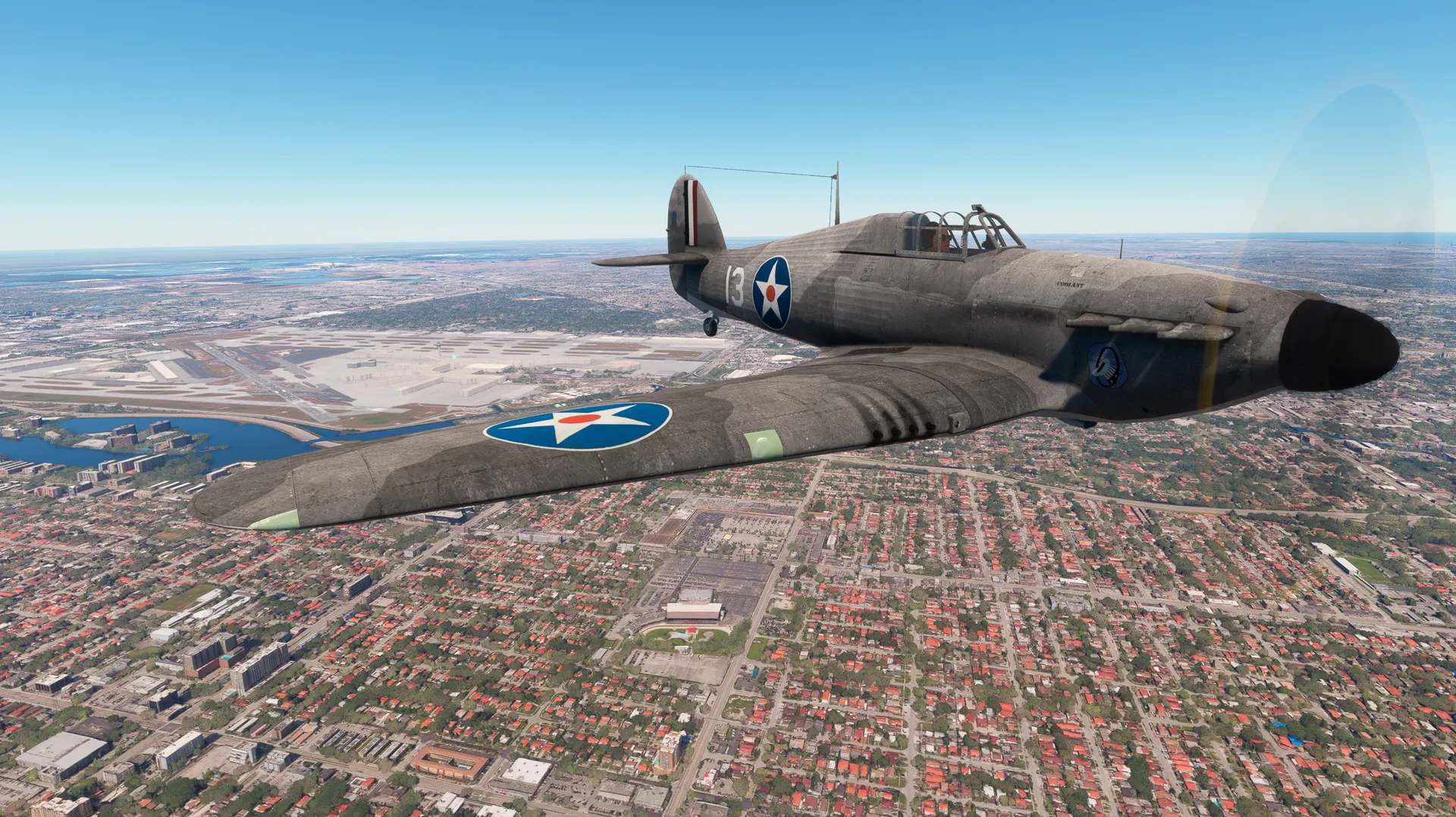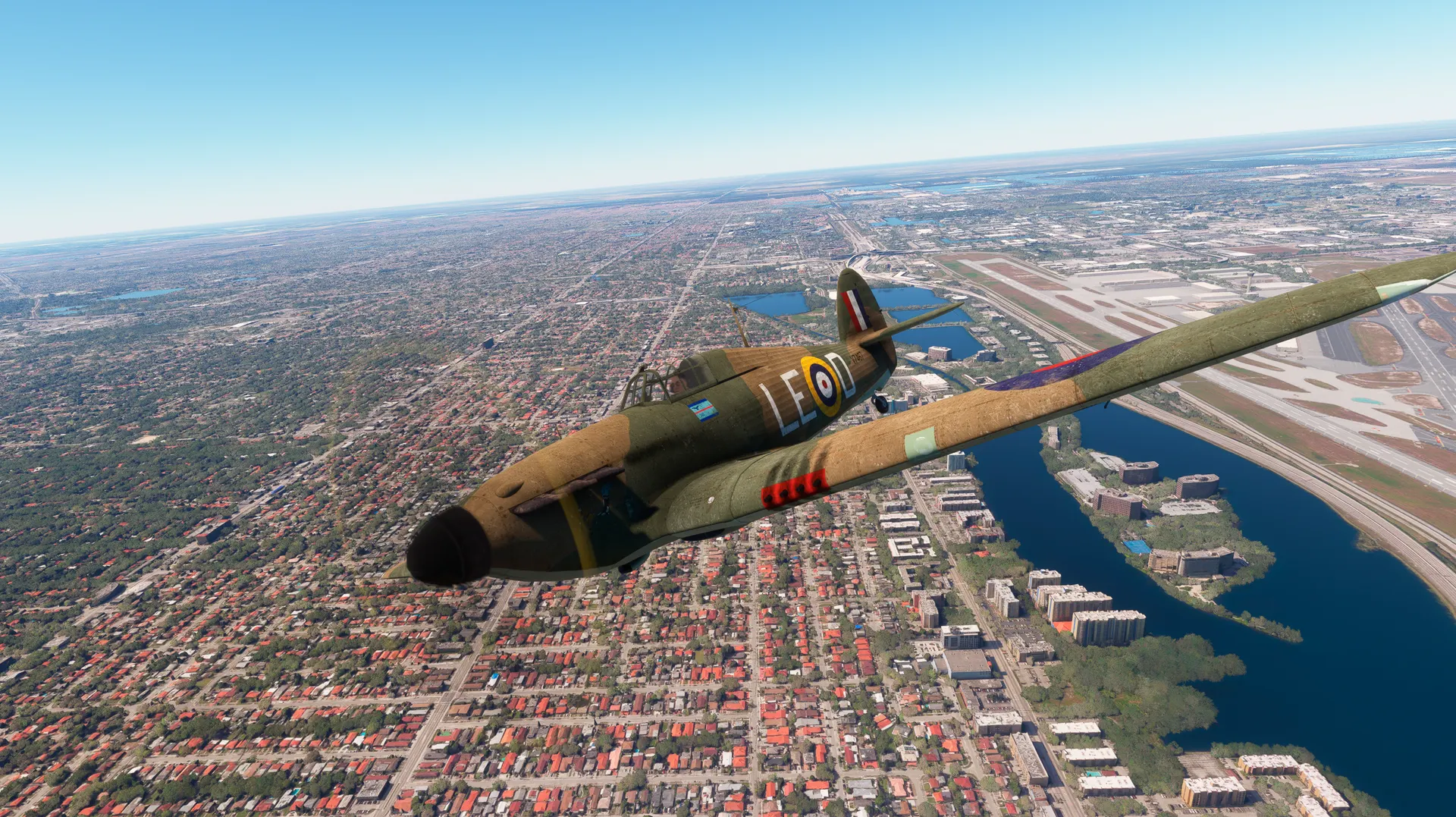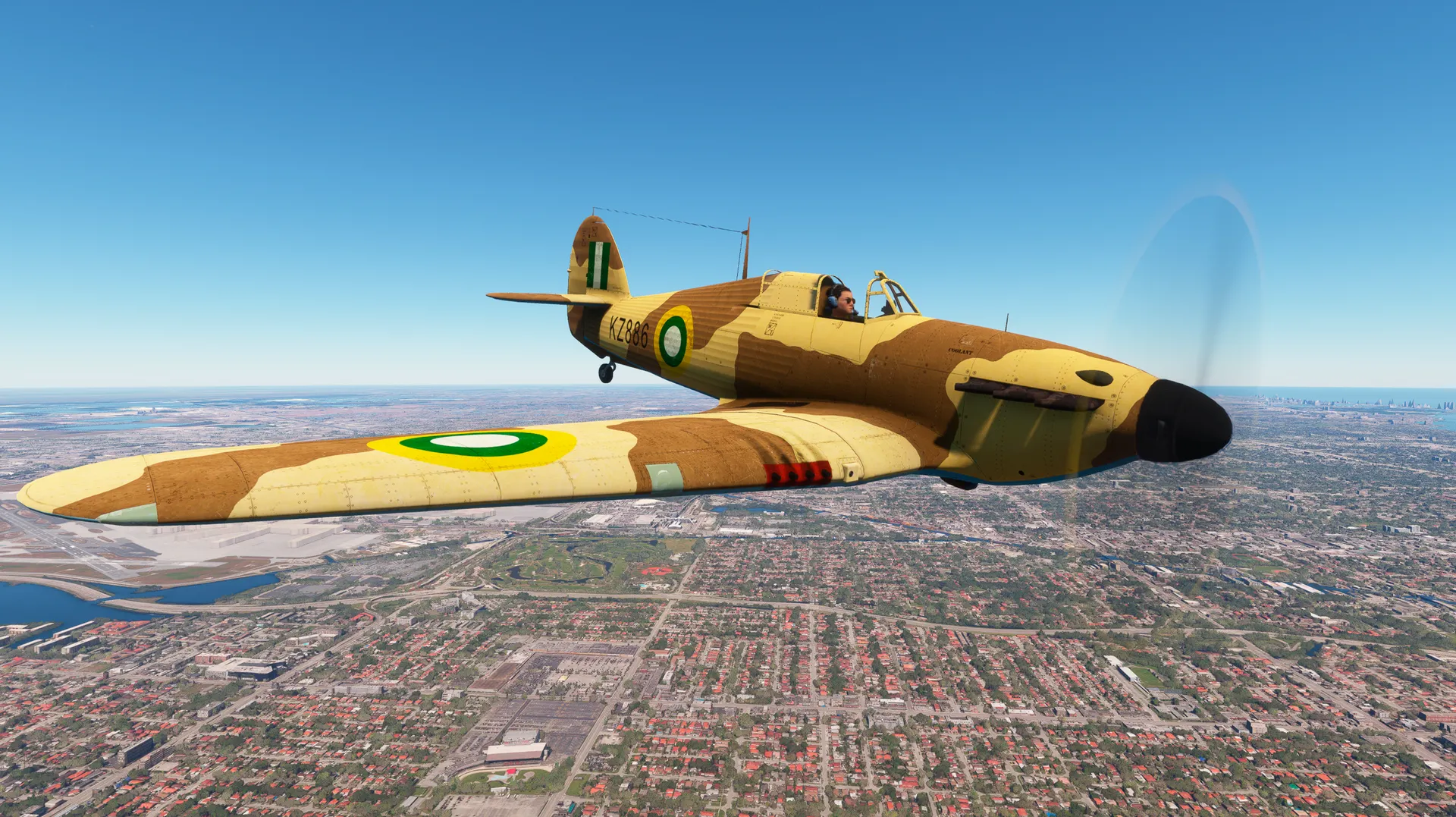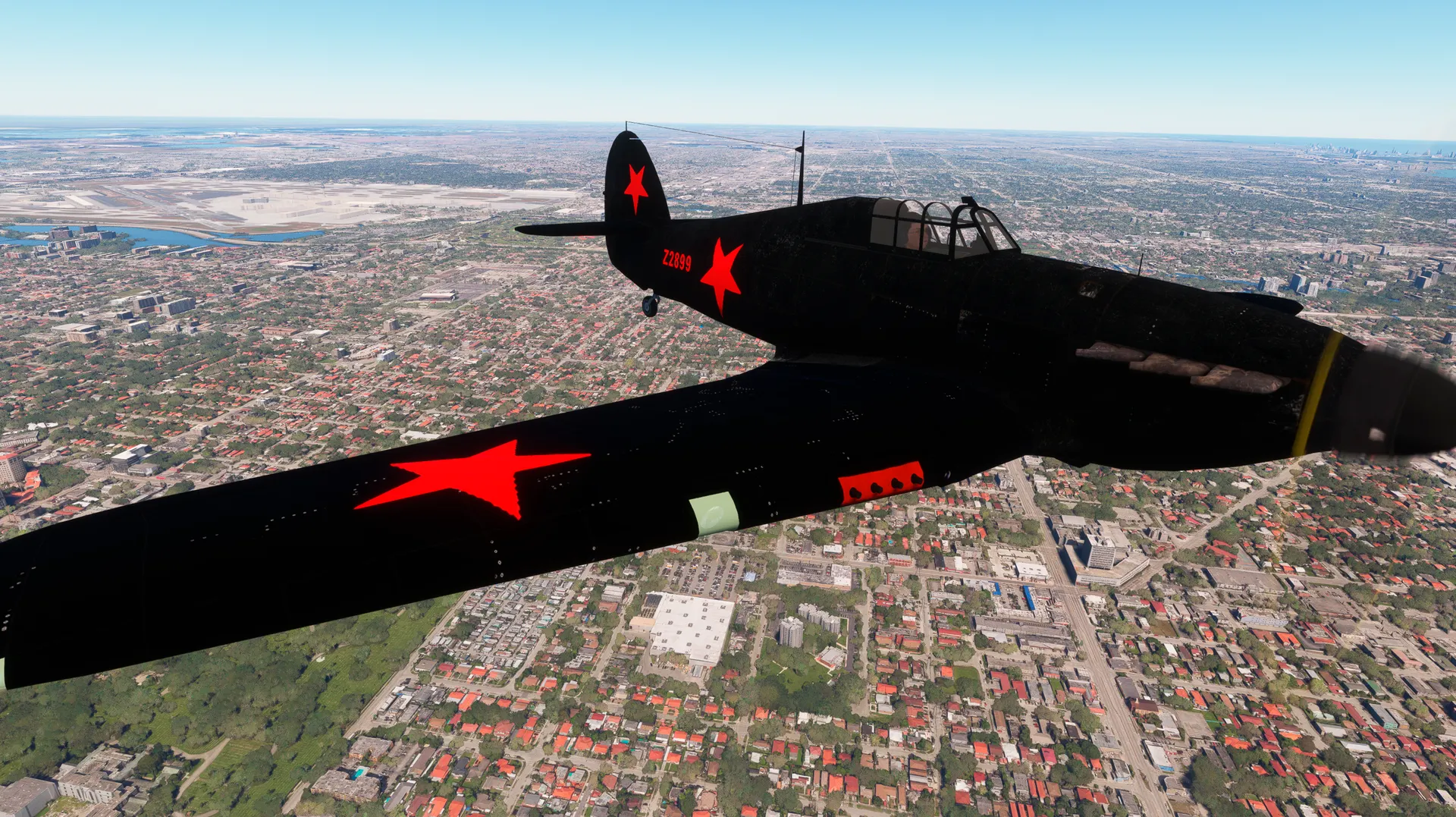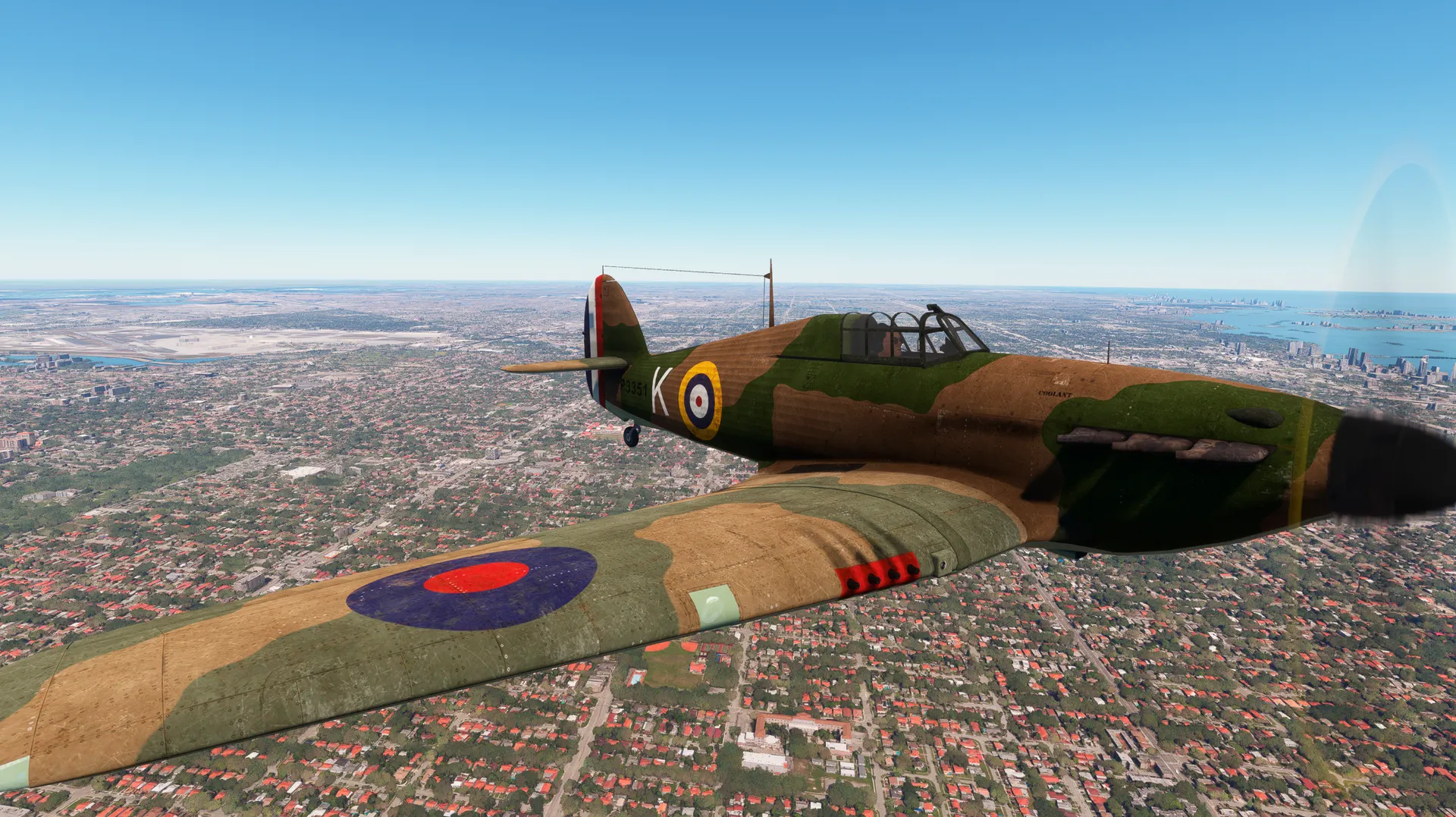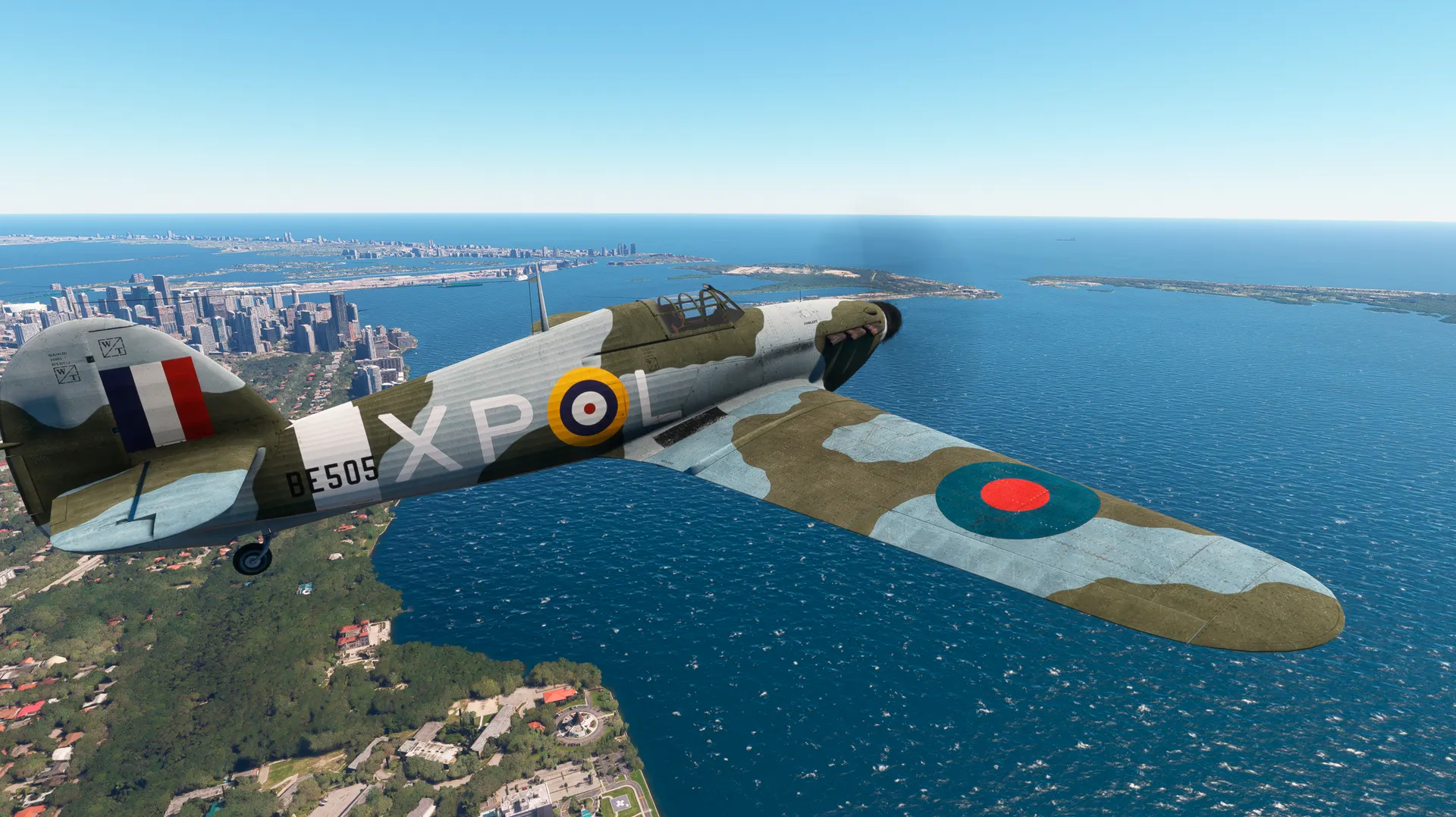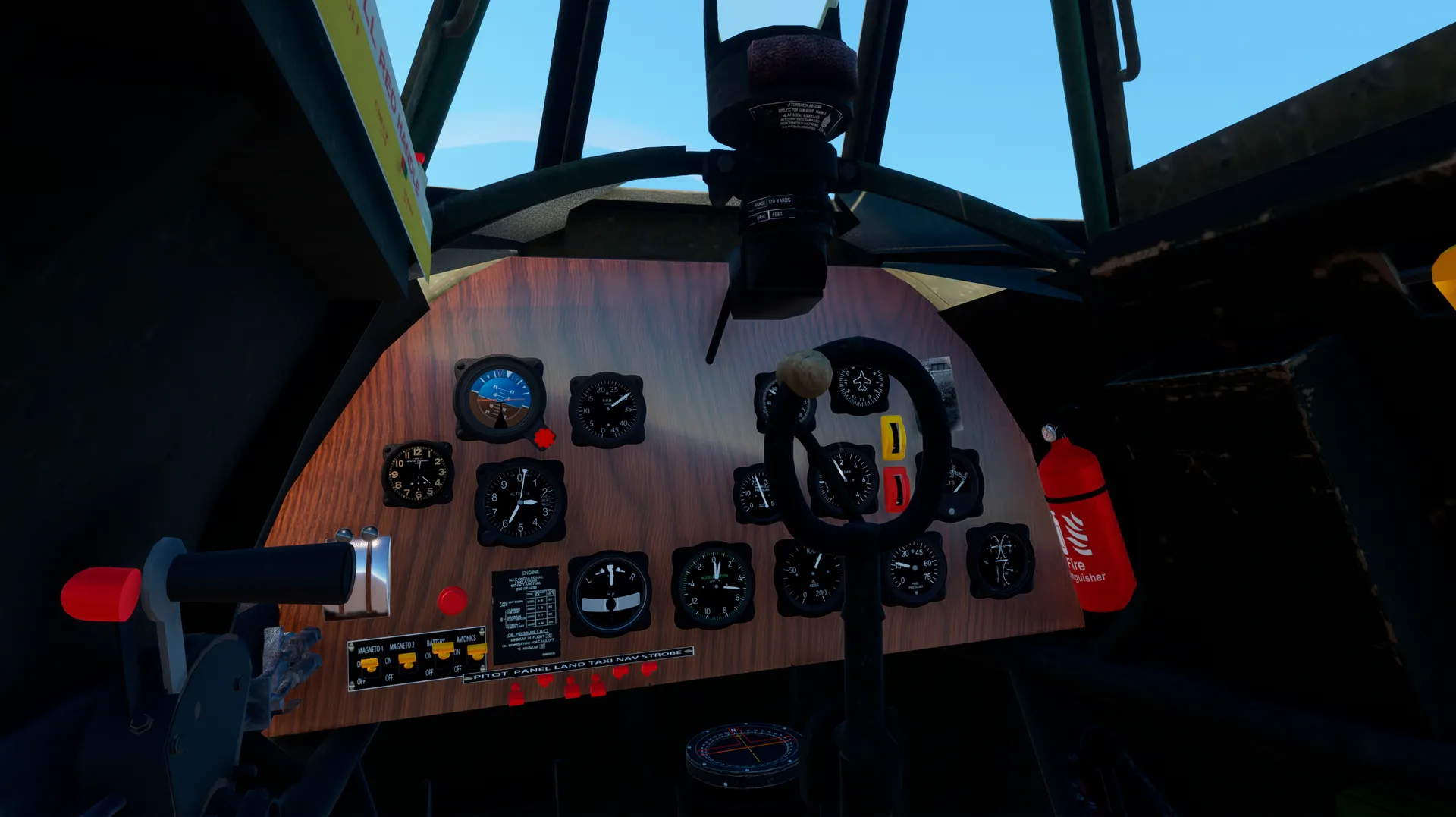- USD 6.99
- -28%
- USD 6.99
- USD 4.99
- Sale Ends: January 7 2026 6:00 PM +00:00
- View more offers at FS Addon Compare
- Added: October 23, 2025
- Updated: December 19, 2025
Hurricane Mk I was born as British military aviation left biplanes behind. Led by Sydney Camm, Hawker pursued a pragmatic solution: a monoplane that still made smart use of familiar wood-and-fabric techniques on the aft fuselage, built around a robust steel-tube frame that was easy to repair in the field. The result was a fighter of simple lines but strong character—one that pushed the RAF into the modern era without giving up reliability.
Its thick wings hid eight .303 Brownings and a detail enthusiasts love to spot in photos: the gun ports sealed with fabric, torn open by the very first burst. Early airframes flew with fabric wings and two-blade fixed-pitch props; as the war tightened, metal wings arrived along with three-blade constant-speed units (Rotol or De Havilland), bringing stronger acceleration and climb. A wide-track undercarriage and free-castoring tailwheel gave the Hurricane a distinctive way of operating from grass fields and rough strips—confident on takeoff, planted on landing. Under the belly, the ventral “bath-tub” radiator became a visual signature and helped define the silhouette everyone recognizes.
In service, the Mk I reached RAF squadrons just before Christmas 1937 and quickly spread across multiple fronts. It fought by day and by night, hauled bombs when needed, went to sea on carriers, and even guarded convoys—valued for its ability to take punishment and keep flying, and above all for being a steady gun platform. While the Spitfire stole the headlines, the Hurricane did the hard work, cutting down bombers and coming back for another mission.
